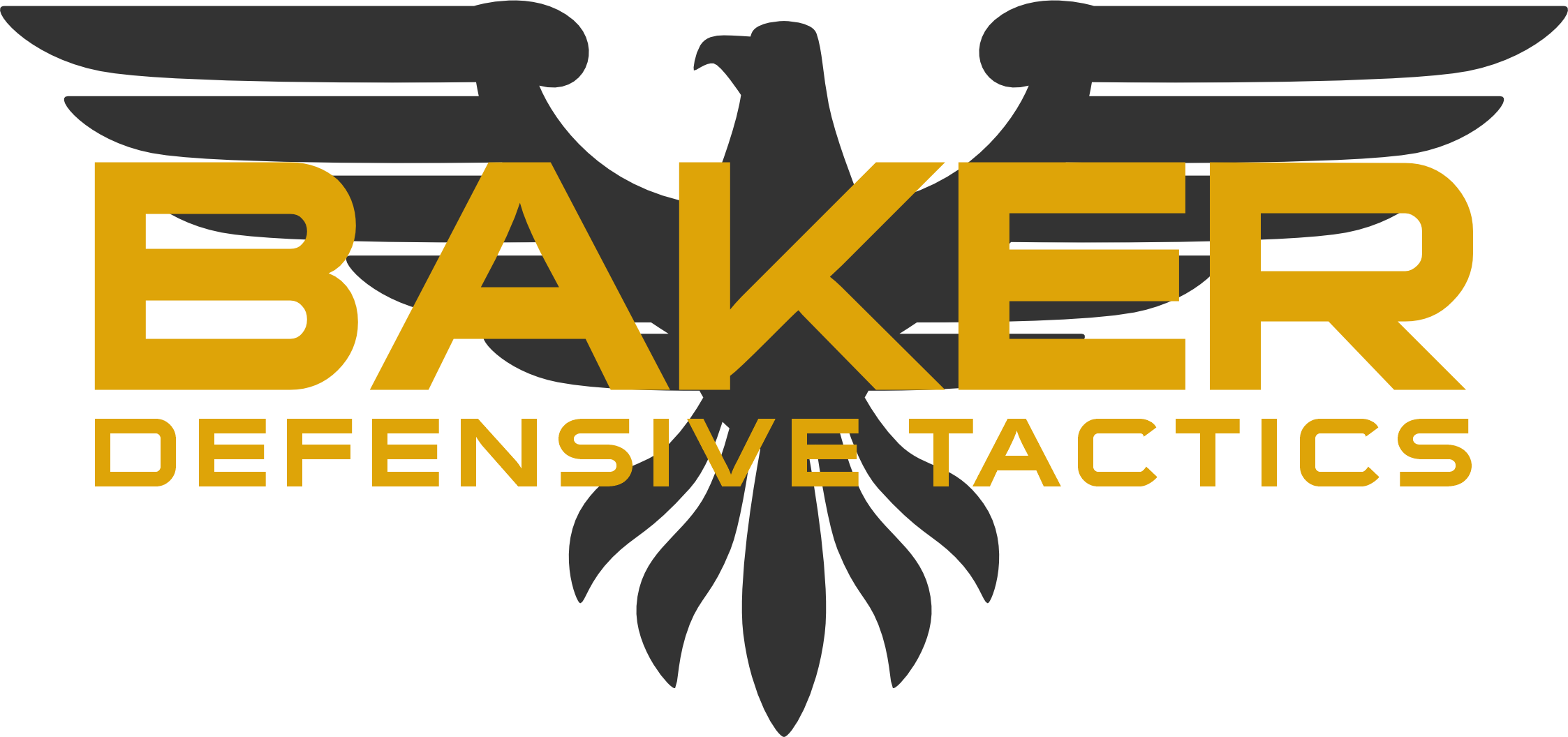Baker Tactical has pre-designed programs available. These programs are delivered in three-hour phases. The training can be done from the standard outline, or we can put together a program that will specifically fit your needs.
These are our available programs.
PROTECTION RESPONSE TACTICS

PRT offers appropriate solutions to all levels of risk.
All countermeasures employed by professional bodyguards should reduce the risk to those they protect. The executive protection agent seeks to reduce the risk to the client by avoiding confrontation. The professional bodyguard would prefer to evacuate the client if faced with conflict.
Sometimes, avoidance does not work, evacuation is not the answer, and sometimes the appropriate countermeasure is applying physical force. This system provides the tools necessary for that reasoned response.
With the increased popularity of Mixed Martial Arts (MMA), professional bodyguards face an opponent who has raised awareness and access to effective training. Despite proper preparations to avoid conflict, the professional bodyguard or personal protection specialist may be faced with a threat that requires immediate engagement.
PRT provides the tools and the training to reduce the risk by engaging the threat.
The Protector’s ultimate goal is to reduce the client’s risk by using the appropriate response. Protection Response Tactics provides the tools and the training to give the protectors additional appropriate countermeasures to help keep their clients safe. Personal Protection Specialists will learn the fundamentals of the PRT program – Physical and Verbal Posturing, Soft Control, and Hidden Force methods. You will learn to follow the PRT principles of using applications that are visually appropriate and socially executable. Everything you do in the PRT program will look appropriate to the situation you are dealing with. Learn to avoid overreacting with the incorrect level of force. PRT will teach you ‘soft control’ methods so you can deescalate and control any situation.
learn to deal with higher levels of aggressive action from a single threat or multiple threats.
be introduced to the skills needed to fight off a vertical surface and from the numerous positions of the ‘around the world drill.
learn the multi-tool principle and how to use it to choose more intelligent and usable applications in a high-stress environment.
Learn PRT’s predator mindset and how to connect to the switch to turn it on when it is needed in a high-threat situation.

VEHICLE TACTICS DEFENSIVE TACTICS

The Vehicle Centric Defensive Tactics Program is designed around the environment and goals of the security agent or tactical operative that must respond to a threat inside and around a motor vehicle. The student learns to deal with an aggressive threat seated next to them or behind them while in the vehicle. Threats reaching into a window or an open door with the intent to remove you or your client are also covered as well as removing a threat from the vehicle. Outside the vehicle, the operator learns how to use the car itself as a weapon against the threat. Different methods of moving along and against the car to produce power for the various combatives that are applied to a threat.
Also, while in the car, the student will learn basic answers for dealing with a firearm or edged weapon that has been pulled. Outside the vehicle, the student learns how to intelligently maneuver around the vehicle and deal with single or multiple threats while standing, kneeling, or lying on the ground. VCDT is a highly effective defensive tactics program designed specifically for professional Security Drivers, protection practitioners, and others who may be forced to defend themselves (or others) while in and around a vehicle.
The program aims to introduce intelligent, Effective, and straightforward answers that will work in many situations, not just give the student another list of the techniques.

Gun Disarm Program

The gun disarming program is a principal-based program. It approaches the whole situation of disarming a gun based on the principles that are absolutely required for success. This approach s essential because once you understand the principles of disarming a firearm, you can apply them to multiple different scenarios. If you just learn a series of techniques, then that is all you have, and if the scenario does not fit the technique, it creates a moment of pause which can cost you.
Anti/counter Grappling Program

The anti-grappling program is designed around a thought pattern that grappling is not fighting! Most grappling systems will teach you to deal with grappling by grappling, and that is not necessarily what the professional law enforcement or security person needs. Most of the time you’re going to end up in the situation while you are armed, so you cannot follow the typical techniques and procedures taught in most “martial Art” programs. Being in a grappling situation when you are armed and on the street has to follow a totally different set of rules of engagement. You cannot get overly involved with one opponent because most of the time, there’s going to be a second or third one that is going to get involved quickly. Our anti-grappling program is not only designed to deal with someone attempting to grapple you in a street situation but will allow you to do it while armed and while disengaging the fight so you can focus on more mission-specific goals.
Edged Weapons Program

The edged weapon program teaches the professional how to deal with an edged weapon when it is introduced into the combative exchange. Unlike what is taught in most martial arts systems, the professional’s primary goal is to avoid the situation and maintain range as much as possible while punishing the threat. This program introduces the concepts and techniques needed to apply the information in that manner. It also takes into consideration security professionals that are having to protect a client and not just themselves.
Gun Retention Program

The gun retention program is also a principal-based approach to retaining a firearm. We focus on the concept of timing when approaching the training. The student needs to have answers on three different times. Before time, on time, and after time. Depending on when he is able to address the threat on this time outline, the techniques and principles that he will apply will be completely different. In a high-stress situation, you don’t always get to choose where you fall on this timeline so it is best to be prepared for any of the three. What’s the student has an understanding of this timing, we make it a goal to train to be ahead of time, but be prepared for the moment we end up on time.
